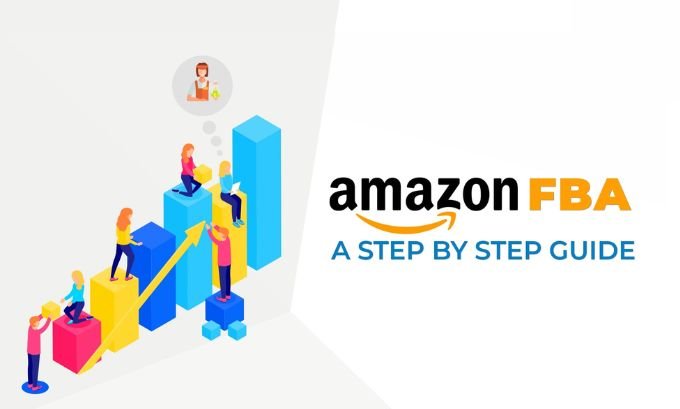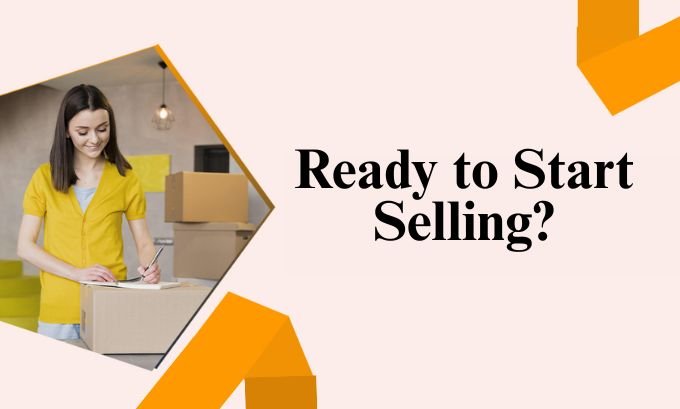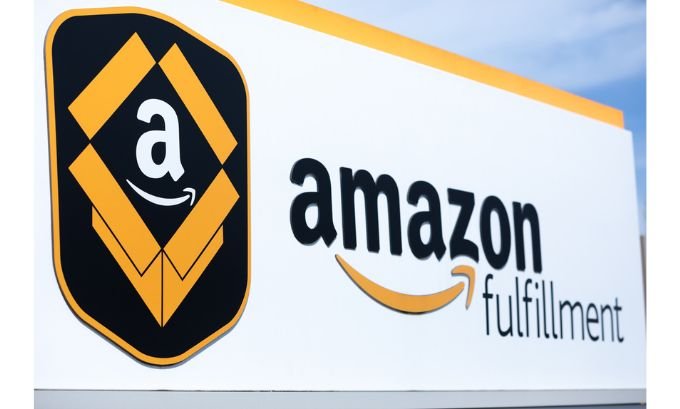Thinking about selling products online but worried about the logistics of storing inventory and shipping orders? Amazon’s Fulfillment by Amazon (FBA) service might be the solution you’re looking for. It allows sellers to leverage Amazon’s massive fulfillment network to manage storage, packing, and shipping, letting you focus on growing your business.
This guide will walk you through exactly how Amazon FBA works, from sending your products to an Amazon warehouse to getting paid. We’ll break down the process step-by-step so you can decide if it’s the right fit for your e-commerce venture.
Table of Contents
What is Amazon FBA?
Fulfillment by Amazon (FBA) is a service that handles most of the physical aspects of selling products. Instead of managing your own inventory and shipping orders to customers, you send your products to Amazon’s fulfillment centers. When a customer buys your product on Amazon, the FBA team picks, packs, and ships the order for you. They also manage customer service and returns, making the entire process remarkably hands-off for sellers.
This model is popular among e-commerce entrepreneurs because it provides access to Amazon’s world-class logistics and vast customer base. Products enrolled in FBA are also eligible for Amazon Prime’s free two-day shipping, which can significantly boost visibility and sales.
How Amazon FBA Works in 5 Steps
Getting started with Amazon FBA involves a straightforward process. Here’s a breakdown of the key steps you’ll follow.

1. Set Up Your Amazon Seller Account
Before you can use FBA, you need an Amazon Seller account. You can choose between an Individual plan (pay per item sold) or a Professional plan (a monthly subscription fee). The Professional plan is generally more cost-effective if you plan to sell more than 40 items per month. During setup, you’ll need to provide business information and bank account details for payments.
2. Create Your Product Listings
Once your account is active, you can list your products on the Amazon marketplace. For each item, you’ll create a product detail page that includes a title, description, images, and price. If the product already exists on Amazon, you can simply add your offer to the existing listing. During this step, make sure you designate your products for FBA.
3. Prepare Your Products for Shipment
Amazon has specific requirements for how products must be prepared and packaged before being sent to their fulfillment centers. This includes proper labeling with FNSKU (Fulfillment Network Stock Keeping Unit) barcodes, which Amazon uses to track your inventory. You must follow these guidelines carefully to avoid delays or issues when your inventory is received.
4. Ship Your Products to Amazon
After preparing your products, you’ll create a shipping plan in your Seller Central account. This plan details which products you’re sending and their quantities. Amazon will then tell you which fulfillment center(s) to ship your inventory to. You can take advantage of Amazon’s partnered carrier program for discounted shipping rates, which simplifies the process of getting your products to the designated warehouse.
5. Amazon Manages the Rest
Once your inventory arrives and is processed at the fulfillment center, your listings will become active with the Prime badge. From this point on, Amazon takes over. When a customer places an order, Amazon’s FBA team handles everything:
- Picking and Packing: They locate your product in the warehouse and package it for shipment.
- Shipping: They ship the order directly to the customer.
- Customer Service: They manage any inquiries, returns, or refund requests related to the order.
Amazon will deposit your earnings into your bank account every two weeks, after deducting their F.B.A fees.
F.B.A vs. FBM: What’s the Difference?
When selling on Amazon, you have another option called Fulfillment by Merchant (FBM). Here’s a quick comparison to help you understand the key differences.
| Feature | Fulfillment by Amazon (FBA) | Fulfillment by Merchant (FBM) |
|---|---|---|
| Inventory Storage | Stored in Amazon’s fulfillment centers | You store your own inventory |
| Order Shipping | Amazon picks, packs, and ships orders | You are responsible for packing and shipping |
| Customer Service | Handled by Amazon | You manage all customer inquiries and returns |
| Prime Eligibility | Automatic for most F.B.A products | Requires meeting strict performance metrics |
| Fees | F.B.A fees (storage, fulfillment) + referral fees | Referral fees only |

Ready to Start Selling?
Amazon F.B.A simplifies the process of running an e-commerce business by outsourcing the most time-consuming operational tasks. By handling storage, shipping, and customer service, F.B.A allows you to concentrate on sourcing products and marketing your brand. While there are fees involved, the access to Amazon’s logistical network and Prime customers often provides a significant advantage that can help scale your business faster.
Frequently Asked Questions
How much does Amazon F.B.A cost?
Costs vary based on product size, weight, and storage duration. Key fees include fulfillment fees (per item sold), monthly inventory storage fees, and your seller plan subscription. It’s important to use Amazon’s F.B.A Revenue Calculator to estimate your costs before starting.
Is Amazon F.B.A profitable?
Yes, F.B.A can be very profitable if you choose the right products and manage your inventory effectively. Success depends on factors like product sourcing, pricing strategy, and keeping your storage fees low by maintaining a good inventory turnover rate.
What products are best for F.B.A?
Products that are small, lightweight, and have a high sales velocity tend to perform best with F.B.A, as they incur lower storage and fulfillment fees. It’s also wise to avoid highly competitive or seasonal items when you’re just starting out.
One of the best products for Amazon F.B.A success is finding niche items — you can explore unique options at TokyoMart.store
